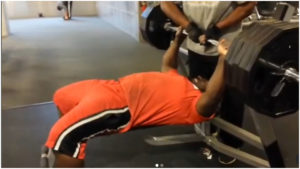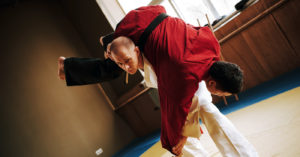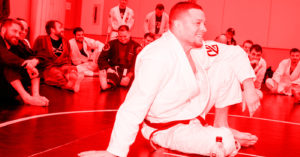The suplex is one of the most exciting but dangerous moves in wrestling. It is an offensive move, allowed in both amateur and professional circuits. It involves flipping an opponent over the head, and onto their back. They can be performed from all angles, but the most common are either a ‘front facelock’ or ‘belly to back’ variant. They also happen to be one of the WWE’s most renowned moves, but are also applicable to greco roman wrestling, MMA and BJJ. Both the UFC and One Championship allow suplexes in their rulesets.
Suplexes help form the basis of wrestling and despite outward appearances, are relatively simple to pull off from a technical perspective. Vertical suplexes and German suplexes are the most widely seen and recognised. To execute successfully, you must first set yourself up for the move, and this could be considered the hardest part. The vertical suplex is a ‘belly to belly’ throw, which in Greco-Roman wrestling is much more common than the ‘belly to back’ variants. Undertooks, Russian ties and arm drags can all be used to set up this type of suplex.
How to Vertical Suplex
1- Once you have accomplished the set-up, it is crucially important to get the right lock. Your opponent should not be able to move freely, but it does not need to be super tight with no wiggle room at all. The best lock is either a finger lock or a classic wrestler’s grip. Make sure the lock is between the rib cage and pelvis. Use your lock to pull in your opponents hips and straighten their back.
2- Plant your feet shoulder-width apart, but as close to your opponent as possible. Pull your hips in before stepping to the left or right side of them, again keeping hips pulled in. Your hips should be perpendicular to theirs. Pull their torso with you so that you maintain belly to belly contact.
3- Squat down to load the hips and legs, then push the hips forward as your legs drive up, and fully arch your back as you launch your opponent over your head and onto their back.
Check out this quick tutorial from Chris Weidman on Fight Nerd for clear instructions on the exact execution of a suplex.
There are two major areas to focus on to develop your suplex technique. First, the legs and hips do the launching, therefore, developing strength in this area will help to improve your power and ability in this area. Secondly, but most importantly, back mobility is a must to be able to carry out this move as effectively and safely as possible.
Read more: 6 Reasons Why It’s Never Too Late to Start Martial Arts
How to Develop Power in the Legs
Lifting your opponent off the ground, often from a low starting position, places a large demand on a number of muscle groups, including the quadriceps. To strengthen the legs, we recommend both the deadlift and the squat. The squat will build strength in the legs, especially the quads, but nothing builds full body strength better than the deadlift. Ultimately, as the suplex is a full body technique, it is encouraged to place the deadlift as the number one priority in this regard.
Deadlift
The deadlift is a weight loaded exercise in which a set of dumbbells or a barbell is lifted off the ground and up to just below hip height, before being returned to the floor. Deadlifts increase core strength and stability, as well as target the majority of muscles in the legs, glutes, and lower back. Aside from that they also help to increase power and lean muscle mass.
This video from Bodybuilding.com contains all you need to know about the deadlift setup, execution, and mentality.
Squat
The squat is a strength exercise that can be performed loaded or unloaded. There are many variations to a squat, but the most basic form involves lowering the hips into a seated position before coming back to stand. Weights can be added through many forms but using dumbbells or a barbell is most common. They primarily work the quads, hamstrings and glutes.
For beginners, or those with mobility issues or injuries, check out this tutorial from Bowflex which will have you squatting correctly in no time.
If you are ready to add weight, but need some guidance with technique, this video from Squat University will tell you everything you need to know.
How to Develop Mobility and Flexibility in the Back
Both flexibility and mobility are required to execute a suplex. Flexibility allows muscles to lengthen passively through a range of motion while mobility allows a joint to move actively through a range of motion. In the case of a suplex, flexibility will be needed for the muscles in the back to stretch, and mobility allows vertebrae in the spine to articulate. A combination of stretching and strengthening is ideal for this purpose. Please note that strengthening can be progressed much quicker than stretching and mobility as new ranges of motion take longer to adapt, so it is advised to make slower progressions in this aspect.
Strengthening: Shoulder Bridge
The shoulder bridge is a hip extension exercise that is also low impact. It strengthens the hips, hamstrings, glutes, and lower back. This is also an excellent place to start if you are unable to squat. Once the bodyweight version has been mastered, you can begin to add weight or resistance to increase intensity.
Pilates offers some of the best technique and knowledge on bodyweight bridges. Pilatesology offers this detailed tutorial to start with, alternatively, if you’re ready to add weight, Scott Herman teaches you how to do just that here.
Strengthening: Full Bridge
Once you have mastered the shoulder bridge, it is time to attempt the full bridge. However, it is still worthwhile to keep the initial bridge as part of your training programme. The deadlift normally reigns supreme as one of the most important strength building exercises, but some argue that the full bridge should take its place. Either way, they should be considered an essential exercise if you wish to do suplexes. They work every single muscle in your back, strengthening, and ultimately bulletproofing the spine, especially in preparation for heavy or explosive movements.
Tom Merrick provides this complete instructional that troubleshoots, as well as providing progresssions to ensure excellent mobility in all areas of a full bridge.
Strengthening: Table top
Tabletop, also known as a reverse plank, is an isometric hold that can improve your athletic performance by targeting the lower back, glutes, abs, obliques and hamstrings, formally known as the posterior chain.
Try out these variations from Pump TV.
Stretching: Supine Spine Twist
This yoga position stretches the back as well as realigns and lengthens the spine. It can also help to relieve back pain.
Watch this short video from Ventuno Yoga for a simple but effective pose to loosen up the back.
Stretching: Jefferson Curl
The Jefferson Curl, often utilised in gymnastic strength training, aids full body mobility and is best performed with an added weight. It is seen as an advancement to a hamstring stretch. It not only increases mobility and flexibility in the spine, it also relieves tension in the back, legs and shoulders. Progress slowly by adding a few pounds of extra weight every couple of months.
GymnasticBodies has the best advice on this stretch.
Stretching: Cat-Cow
Another stretch borrowed from yoga, the cat cow pose that stretches the back and neck while simultaneously opening the chest. By lying to align the spine, this is another move to add to help prevent back injuries and relieve back pain.
Watch this video from Sharon Lynn Yoga for a full breakdown of the pose.
Conclusion
The Suplex can be a hazardous and high risk throw to pull off. For this reason, ensure you are training under the guidance of an experienced coach, and are working with a suitable partner. Other precautions such as appropriate clothing, soft flooring and a sport specific warm up can help to reduce risk of injuries. If you have any knee or back injuries, make sure to consult a physician before attempting anything.
Mobility and flexibility are a core component of overall fitness. It is not just strength and cardio that we should be concerned about. Any lack in regards to mobility and flexibility can hinder progress and performance due to muscle tightness, or even cause injuries over time. It is fair to say that if you are trying to suplex someone, they will also be trying to suplex you. Consequently, we need to be primed for both delivery and receipt.
Whatever level you are learning or competing at, these exercises should not only help your technique and execution, but they also maintain good back health and reduce incidences of injury or pain in the future.









